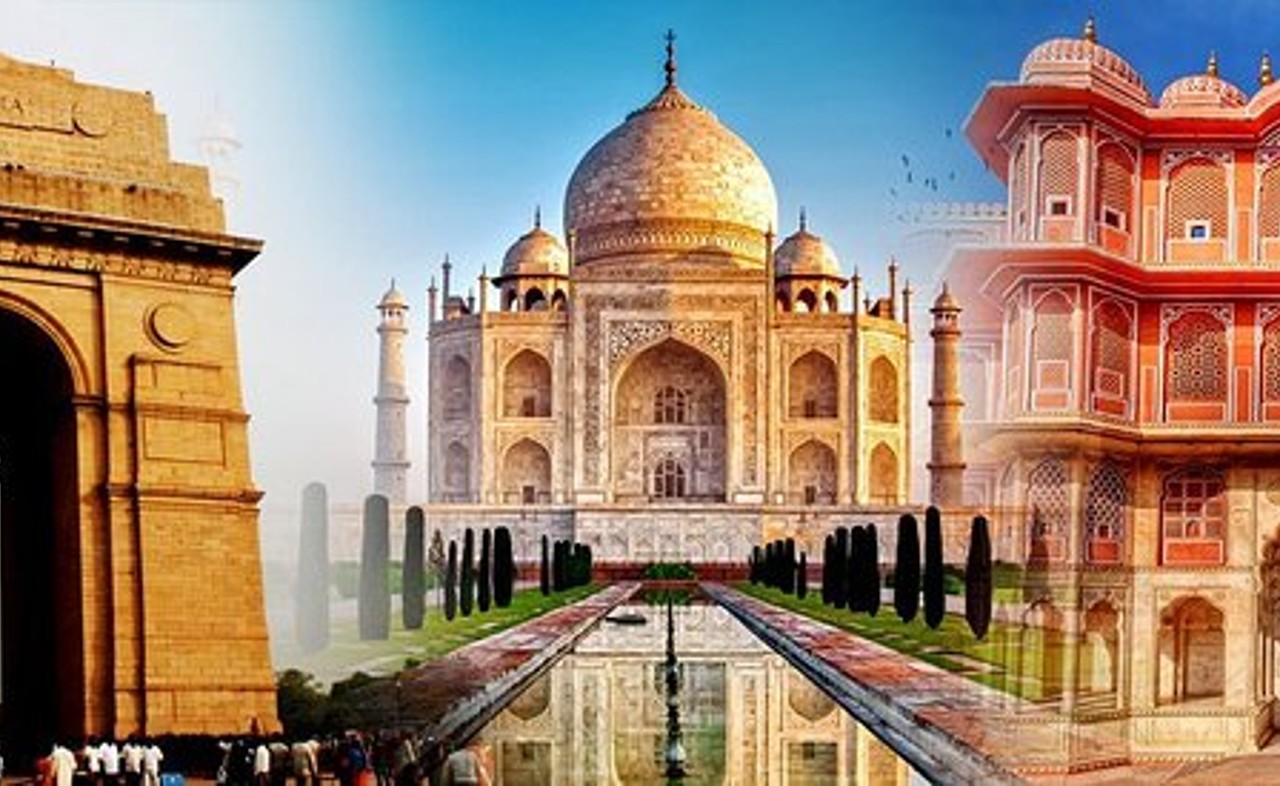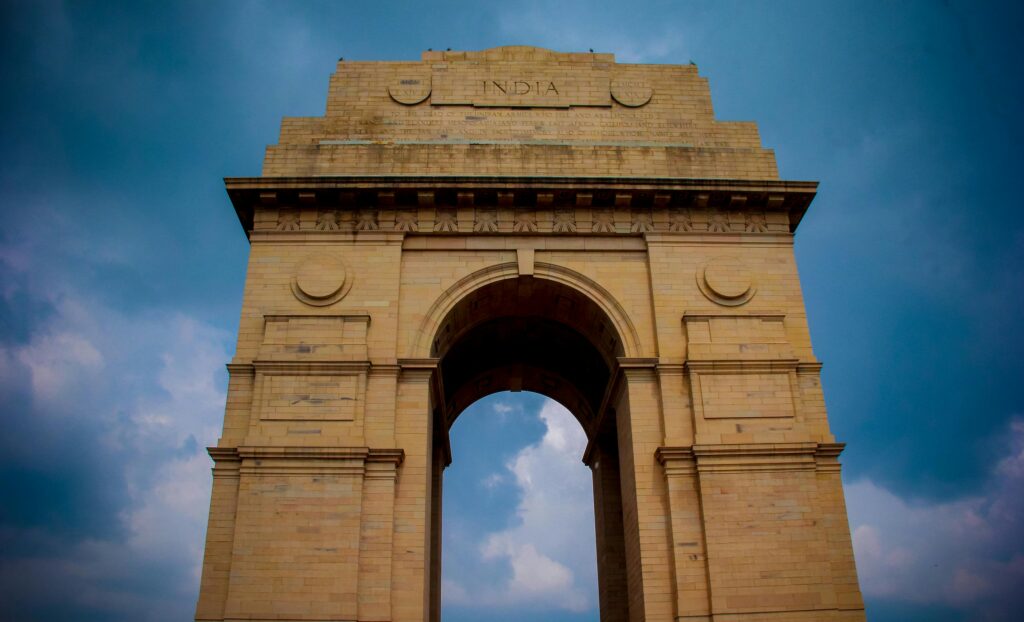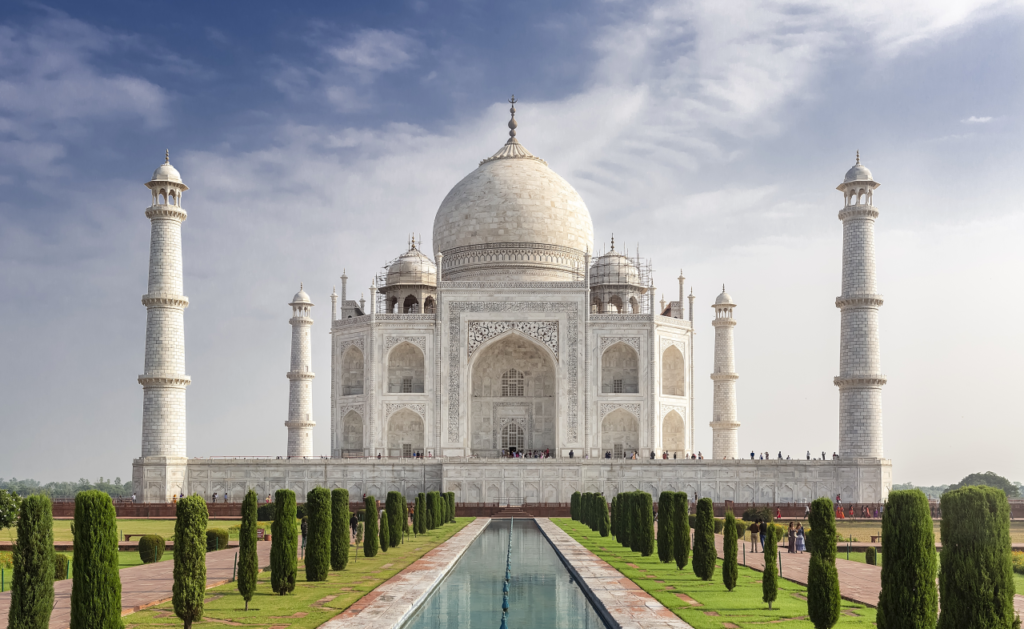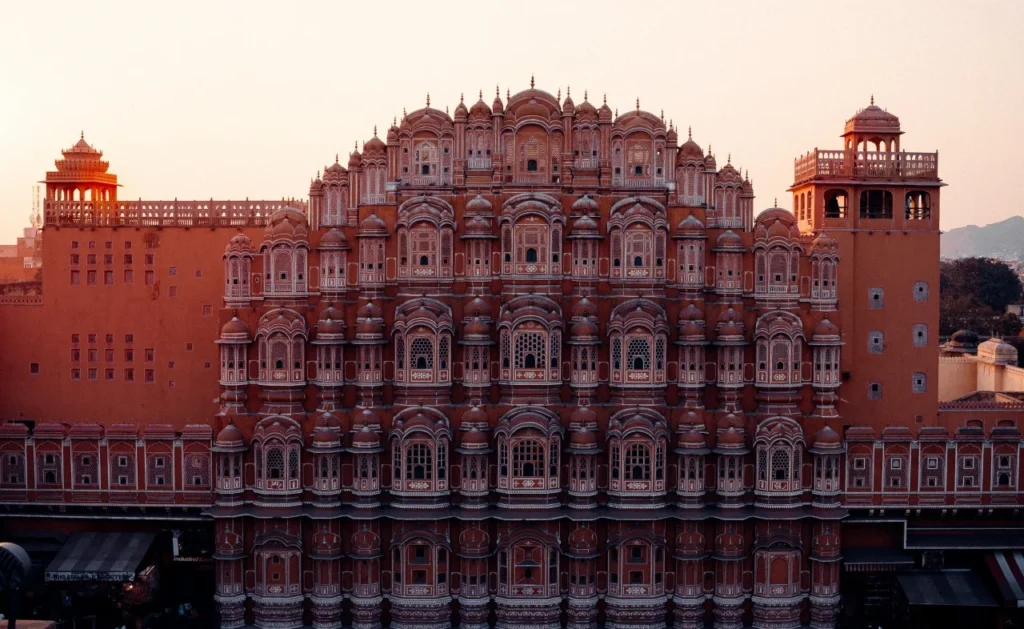
Unlocking the Secrets of India’s Golden Triangle
Embark on a mesmerizing journey through India’s enchanting Golden Triangle, where vibrant culture converges with awe-inspiring landscapes. This iconic tourist circuit encompasses the cities of Delhi, Agra, and Jaipur, each boasting a rich tapestry of history, heritage, and architectural marvels. Discover the secrets hidden within these majestic destinations as you immerse yourself in the charm of India’s golden era.
Starting in the bustling capital city of Delhi, you’ll be captivated by its contrasting blend of modernity and ancient allure. Explore the UNESCO World Heritage Sites of Qutub Minar and Humayun’s Tomb, and traverse the bustling lanes of Old Delhi, where centuries-old markets and towering monuments narrate tales of a bygone era.
Next, experience the epitome of love and architectural grandeur in Agra, where the resplendent Taj Mahal effortlessly steals the spotlight. Marvel at this magnificent marble masterpiece, built by Emperor Shah Jahan as a symbol of eternal love for his beloved wife.
Finally, the pink-hued city of Jaipur awaits, with its magnificent palaces, opulent forts, and bustling bazaars. Immerse yourself in the royal grandeur of the City Palace, marvel at the intricate designs of Hawa Mahal (the Palace of Winds), and journey back in time while exploring the majestic Amber Fort.
Unlock the secrets of India’s Golden Triangle, where a treasure trove of rich heritage and breathtaking landscapes await your discovery.
Exploring the Rich Heritage of Delhi

Delhi, the capital city of India, is a vibrant tapestry of history, culture, and modernity. As the starting point of your Golden Triangle journey, this bustling metropolis offers a captivating glimpse into the country’s rich heritage. From the towering minarets of the Qutub Minar to the serene gardens of Humayun’s Tomb, the city’s UNESCO World Heritage Sites are a testament to the architectural brilliance of India’s past rulers.
Dive into the heart of Old Delhi, where the narrow streets and bustling markets transport you back in time. Explore the iconic Jama Masjid, one of the largest mosques in India, and marvel at its intricate red sandstone and white marble architecture. Wander through the vibrant Chandni Chowk, a sprawling marketplace that offers a sensory overload of sights, sounds, and aromas. From spice vendors to traditional handicrafts, this historic bazaar is a shopper’s paradise, showcasing the city’s rich cultural tapestry.
Beyond the ancient landmarks, Delhi also boasts a dynamic modern face. The grand India Gate, a memorial to the Indian soldiers who lost their lives in World War I, stands tall as a symbol of the nation’s resilience. Stroll through the verdant Lodi Gardens, a serene oasis amidst the urban landscape, and discover the remnants of Lodi-era tombs and mosques. As the sun sets, the city’s energy transforms, with vibrant nightlife and a thriving culinary scene that celebrates the diverse flavors of India.

The Majestic Landscapes of Agra
From the bustling streets of Delhi, your journey continues to the city of Agra, home to the iconic Taj Mahal – one of the Seven Wonders of the World. This magnificent marble mausoleum, built by Emperor Shah Jahan as a testament to his eternal love for his wife, Mumtaz Mahal, is a sight to behold. As you approach the Taj Mahal, the sheer scale and grandeur of this architectural masterpiece will leave you in awe.
Immerse yourself in the serene ambiance of the Taj Mahal’s gardens, where the intricate patterns of the reflecting pools and the delicate marble carvings create a harmonious symphony. Take a moment to appreciate the play of light and shadow on the monument’s pristine white marble, which seems to change hues throughout the day. The Taj Mahal’s beauty is further enhanced by the surrounding Mughal-era structures, such as the magnificent Agra Fort and the serene Mehtab Bagh, offering panoramic views of this architectural wonder.
Beyond the Taj Mahal, Agra boasts a rich tapestry of history and culture. Explore the imposing Agra Fort, a UNESCO World Heritage Site that served as the primary residence of the Mughal emperors. Marvel at the intricate red sandstone architecture and the stunning Diwan-i-Aam (Hall of Public Audience), where the emperors once held court. Delve into the city’s culinary delights, savoring the famous Mughlai cuisine, which blends the flavors of the Mughals with the local Awadhi traditions.
Discovering the Wonders of Jaipur

Continuing your Golden Triangle journey, you’ll arrive in the vibrant city of Jaipur, also known as the “Pink City.” This captivating destination is a harmonious blend of royal grandeur and modern sophistication, offering a unique insight into Rajasthan’s rich heritage.
Begin your exploration at the majestic Amber Fort, a stunning 16th-century fortress perched atop a hill. Ascend to the fort’s impressive entrance on the back of an elephant, and marvel at the intricate architecture that seamlessly blends Hindu and Mughal styles. Wander through the grand palaces, admiring the delicate mirror work, ornate frescoes, and the stunning Sheesh Mahal (Palace of Mirrors).
Next, head to the heart of Jaipur, where the iconic Hawa Mahal (Palace of Winds) stands tall. This remarkable five-story structure, with its intricate latticed windows, was designed to allow the royal ladies to observe the bustling streets without being seen. Explore the nearby City Palace, a magnificent complex that showcases the city’s rich royal heritage. Admire the ornate Chandra Mahal, the former residence of the Maharaja, and visit the Maharaja Sawai Man Singh II Museum to gain insights into the city’s royal past.
Must-Visit Attractions in the Golden Triangle
As you explore the cities of the Golden Triangle, you’ll discover a wealth of must-visit attractions that will captivate your senses and leave you with lasting memories.
In Delhi, don’t miss the opportunity to visit the Qutub Minar, a towering 73-meter-high minaret that is the tallest brick minaret in the world. Admire the intricate carvings and the blend of Islamic and Hindu architectural styles that adorn this UNESCO World Heritage Site. Another must-see is Humayun’s Tomb, a grand Mughal-era mausoleum that served as the inspiration for the Taj Mahal.
In Agra, in addition to the Taj Mahal, explore the impressive Agra Fort, a UNESCO World Heritage Site that showcases the architectural prowess of the Mughal empire. Wander through the fort’s grand palaces, mosques, and courtyards, and gain insights into the lives of the Mughal rulers. For a panoramic view of the Taj Mahal, visit the serene Mehtab Bagh, a Mughal-era garden complex located on the banks of the Yamuna River.
In Jaipur, the Amber Fort, Hawa Mahal, and City Palace are must-visit attractions that provide a deep dive into the city’s royal heritage. Don’t miss the Jantar Mantar, an astronomical observatory that is also a UNESCO World Heritage Site. The intricate instruments here were used to measure time and track celestial bodies, showcasing the scientific advancements of the past.
Best Time to Visit the Golden Triangle
The best time to visit the Golden Triangle in India is during the winter months, typically from October to March. During this period, the weather is pleasantly cool, with comfortable temperatures ranging from 20°C to 30°C (68°F to 86°F), making it an ideal time for sightseeing and exploring the cities.
The winter season also coincides with several major festivals and events in the region, providing visitors with a unique opportunity to immerse themselves in the vibrant cultural tapestry of India. For instance, the Diwali festival, the “Festival of Lights,” is celebrated in October or November, transforming the cities with dazzling displays of lights and festive celebrations.
If you’re interested in witnessing the magnificent bloom of the Mughal-era gardens, the best time to visit the Golden Triangle is during the spring months, from March to May. This is when the gardens, particularly the ones in Agra and Jaipur, come alive with a riot of colors and fragrant blossoms, creating a serene and picturesque setting for your exploration.
How to Plan Your Trip to the Golden Triangle
Planning a trip to the Golden Triangle can be an exciting and rewarding experience, but it’s important to consider a few key factors to ensure a seamless and memorable journey.
Begin by determining the duration of your trip. The Golden Triangle can be comfortably explored in a 5-7 day itinerary, allowing you to fully immerse yourself in the rich heritage and stunning landscapes of each destination. Consider adding a few extra days if you wish to venture beyond the main cities and explore other nearby attractions, such as the holy city of Varanasi or the desert state of Rajasthan.
Next, decide on your mode of transportation. While the cities of the Golden Triangle are well-connected by air, rail, and road, the choice will depend on your preferences and budget. Domestic flights can be a convenient option for quick transfers, while the iconic Indian Railways offer a unique opportunity to experience the country’s diverse landscapes and interact with locals. For a more immersive experience, consider hiring a private driver or joining a guided tour, which can provide valuable insights and logistical support throughout your journey.
Tips for Exploring the Golden Triangle
As you embark on your Golden Triangle adventure, keep these tips in mind to make the most of your experience:
- Dress appropriately: When visiting religious sites and monuments, it’s important to dress modestly, covering your shoulders and knees. This shows respect for the local customs and traditions.
- Embrace the local cuisine: Indulge in the rich and flavorful Mughlai, Punjabi, and Rajasthani cuisines that are a hallmark of the Golden Triangle region. From the tandoori delights of Delhi to the fragrant biryani of Agra, savor the diverse flavors that will tantalize your taste buds.
- Bargain with confidence: Haggling is a way of life in the bustling markets of the Golden Triangle. Embrace the art of bargaining, and don’t be afraid to negotiate for the best prices on souvenirs, textiles, and handicrafts.
- Stay hydrated: The Indian climate can be quite warm, especially during the summer months. Carry a water bottle and stay hydrated throughout your explorations to ensure a comfortable and enjoyable experience.
- Respect local customs: India is a diverse and culturally rich country with a myriad of traditions and customs. Be mindful of local practices, such as removing your shoes before entering religious sites and seeking permission before taking photographs of people.
By keeping these tips in mind and embracing the unique experiences that the Golden Triangle has to offer, you’ll create memories that will last a lifetime.
In conclusion, the Golden Triangle of India is a captivating journey through a tapestry of rich heritage and stunning landscapes. From the bustling streets of Delhi to the architectural marvels of Agra and the royal grandeur of Jaipur, this iconic tourist circuit offers a glimpse into India’s glorious past and vibrant present. Unlock the secrets of the Golden Triangle, and embark on an unforgettable adventure that will leave you with cherished memories and a deeper appreciation for the beauty and diversity of this incredible country.






